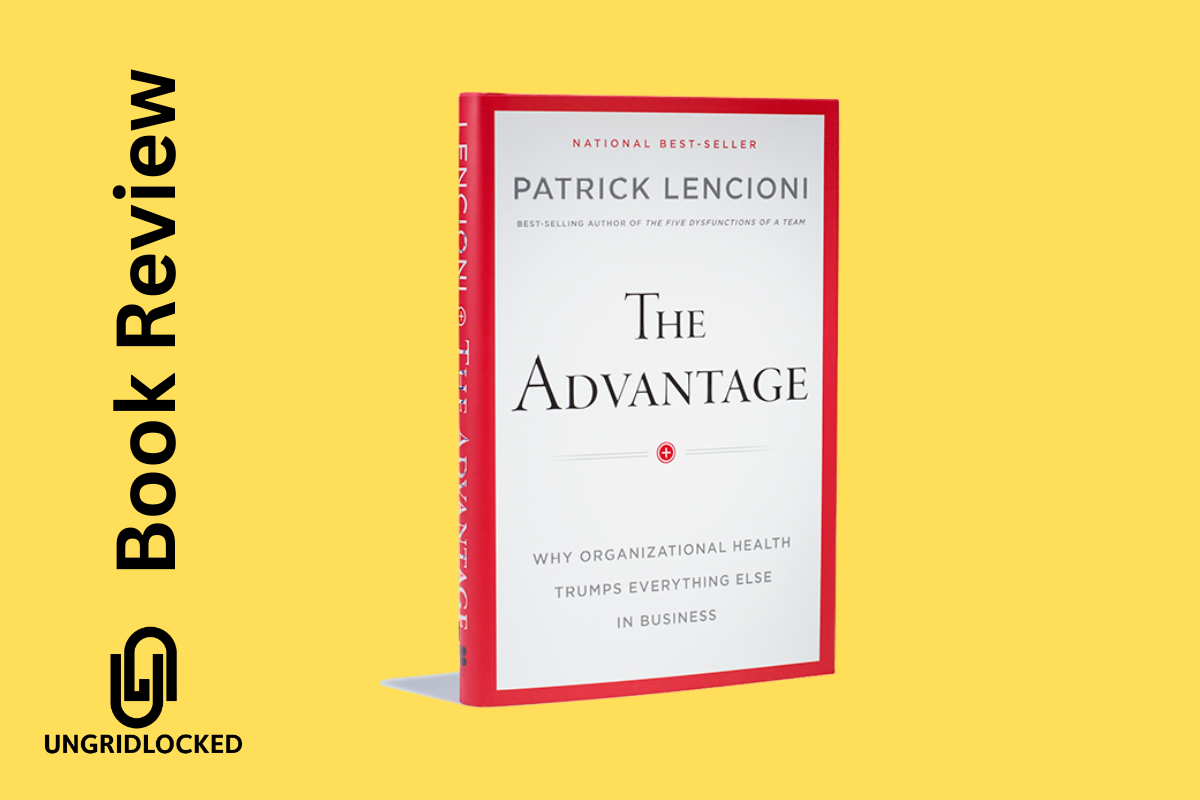If you follow any of my posts on Linkedin then you’ll know I’m a big Patrick Lencioni fan. From the first time I read The Ideal Team Player, I was drawn to his style of writing for communicating business ideas with clarity, ease of understanding, and depth.
“The Advantage” is one of the reasons I was so drawn to organizational health and being able to work with companies towards health. In this book he departs from his usual fable-style writing and presents it more as a practical and comprehensive guide to organizational health.
He makes a bold claim that organizational health trumps everything else in business, including the traditional (and tactical) advantages such as strategy, technology, and financial management.
I’m inclined to agree.
Lencioni breaks down organizational health into four key disciplines:
- Build a Cohesive Leadership Team– He emphasizes the importance of trust among leaders and their ability to engage in productive, unfiltered conflict around ideas. The book details how to achieve this through vulnerability-based trust and commitment to collective decisions.
- Create Clarity– The author presents six critical questions organizations must answer, including:
- Why do we exist? (Core Purpose)
- How do we behave? (Core Values)
- What do we do? (Business Definition)
- How will we succeed? (Strategic Anchors)
- What is most important right now? (Thematic Goal)
- Who must do what? (Defining Roles)
- Over-Communicate Clarity– Lencioni argues that leaders must communicate key messages repeatedly and through multiple channels. He suggests that when leaders feel they’re repeating themselves too much, they’re probably just beginning to get through to employees.
- Reinforce Clarity– The book explains how to embed an organization’s answers to the six questions into every process, including hiring, onboarding, performance management, and decision-making.
He briefly touches on the Five Dysfunctions of a Team (which is worth reading entirely on its own as well):
- Lack of Trust – The most fundamental dysfunction
- Team members don’t feel safe being vulnerable with each other
- People hide weaknesses and mistakes from one another
- Results in defensive behaviors and reluctance to ask for help
- Leaders must model vulnerability first to build trust
2. Fear of Conflict – Stems from lack of trust
- Teams avoid ideological conflict and debate
- Meetings are boring and avoid controversial topics
- Results in artificial harmony and failure to address critical issues
- Productive conflict focuses on ideas, not personalities
3. Lack of Commitment – Results from lack of healthy conflict
- Team members don’t buy in to decisions
- Ambiguity about direction and priorities prevails
- Creates an environment of ambiguity and missed opportunities
- Real commitment requires clarity and buy-in, not consensus
4. Avoidance of Accountability – Stems from lack of commitment
- Team members don’t hold each other accountable
- High standards are not enforced
- Mediocrity becomes acceptable
- Peer-to-peer accountability is crucial for high performance
5. Inattention to Results – The ultimate dysfunction
- Team members put individual needs above team goals
- Status and ego drive decisions
- Team fails to achieve its collective goals
- Requires focus on measurable outcomes and team success
What sets this book apart is its practicality. Unlike many other business books I’ve read that offer theoretical frameworks, “The Advantage” provides specific, actionable steps and tools. And anecdotes to support his reasoning.
Meeting Structures
He includes detailed meeting structures, assessment tools, and exercises that organizations can implement immediately. At a high level, he outlines the basic meetings that any organization should cover including:
- Daily Check-ins (5-10 minutes)
- Weekly Tactical (45-90 minutes)
- Monthly Strategic (2-4 hours)
- Quarterly Off-site Review (1-2 days)
Again, there is so much more that could be said about any of these disciplines alone which naturally point a reader (such as myself) to the more in-depth book. In this case, it would be Death by Meeting.
One of the marks of a “classic” business book is that the principles can stand the test of time and concepts aren’t dated by technology. “The Advantage” was published in 2012 and having just read it in 2024 I would say that much of the foundational principles still ring true.
Furthermore, I have to ask myself if the ideas would work across industries and companies of all sizes- from technology startups, to non-profits, to Fortune 500 companies. I would say this is true, also.
If you plan to read the book, it’s a good starting point to get you to think about organizational health- either for yourself or a business you work with. However, it is not the end-all be-all guide to the nuances of organizational health.
I referenced in this post many supplementary books he writes about, but furthermore have seen it firsthand from experience how unique each company and each company’s challenges are. There are a plethora of other resources such as podcasts (some not necessarily leadership related) that have aided in how I address organizational health including many parenting books.
If you’re interested in having an outsider assess your company and help you identify some potential unrealized opportunities then let’s have a chat to discuss.

